Julian Barnes

I don’t regret any of the literary reading I missed out on in my youth. I rather enjoy the chronological hazard of not discovering Huckleberry Finn and The Catcher in the Rye and Le Grand Meaulnes until my 40s (and I still haven’t read Le Petit Prince). Literary regret functions rather the other way round: I wish I hadn’t been given Conrad’s The Secret Sharer at the age of 11, which induced a decades-long resistance to him; and I wish I hadn’t read EM Forster before I was able to take his proper measure (though this makes his rediscovery a doubled pleasure).
So the books I would give to my younger self would all be non-fiction, aimed at undermining the automatic prejudices of a white postwar English suburbanite. Books about the true nature of war, empire and race; about the true nature of politics and economics, and how class, money and power are connected. Books that would have made me realise sooner how others – especially foreigners – don’t see us as we complacently see ourselves (I can still recall my bafflement when a Spanish friend told me Francis Drake was a pirate …). Also, books about the true nature of Nature. I was a blind townee for half my life before slowly discovering the countryside. So I would instruct my younger self to learn about soil, wind and water; trees, animals, plants and birds. And bees. That’s another thing: I’d also give my younger self some truthful books about sex.
Margaret Drabble
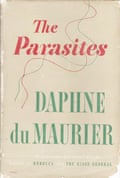
Daphne du Maurier’s The Parasites is a book to read when young. I didn’t come across it until my 70s, on the recommendation of my novelist friend Andrea Newman, but I would have fallen in love with it when I was 15. It is a novel about three step-siblings of complicated parentage, growing up wildly in a crazy Bohemian theatrical family, inspired by Du Maurier’s own. The Delaneys are bad but talented children, indulged with champagne, chocolate eclairs and sucettes – a lovely, decadent word for lollipop, sucette, and hitherto unknown to me. They are dragged around Europe with their celebrated performing parents, staying in expensive hotels or French coastal resorts. What child from South Yorkshire would not long for this? It is Pamela Brown’s The Swish of the Curtain for the post-pubertal, a tale of dramatic longings with added sex, some of it of an ambiguous nature. The narrative mode is in itself intriguing, as the three siblings sometimes speak collectively, and it is never clear who is speaking or remembering what. Mature readers no doubt consider the Delaneys selfish and silly and amoral, and so they are, but they are captivating. I missed du Maurier entirely as a teenager, put off her possibly by some snobbish remark by my mother or my English teacher, and she cannot be said to be in the front rank: I’ve found other novels by her to be unreadable or kitsch. But this one is unexpected, and fun, and one of her own favourites.
David Nicholls
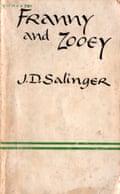
With the books we love, so much depends on timing. Between the ages of 16 and 22 I read a series of novels that still make up the best part of my all-time favourite list. Often, the books were read and read again in preparation for exams and though I was certainly not uncritical, I was zealously protective of the books I loved and perhaps a more generous and forgiving reader than I would be if I were coming to Hardy or Dickens, Orwell or Scott Fitzgerald for the first time in middle age.
I read Salinger’s Franny and Zooey in my late 20s, which I think was about 10 years too late. I loved the book and it remains a favourite, but it’s a novel that could have been custom-built for my 18-year-old self. The self-consciousness, the anguished debates about art and faith and literature, the earnestness and impatience and anxiety about the future, it’s all there. Franny and Zooey is one of the few books that I’ve returned to every year and while I still love it, the voice in my head grows a little more sceptical each time. Is the stuff about religion really so profound? Isn’t there something just a little bit whimsical, precious, self-satisfied about the Glass family? That famous ending still moves me, but is it just a little sentimental? And why are there so many goddam italics?
At 18, I don’t think any of this would have crossed my mind. It would have been that rare thing, a perfect book. I still treasure it and I don’t think I’ve read anything since that has affected me and inspired me as much, both as a reader and a writer. Now I love it for its comedy – Salinger’s dialogue is wonderful – for its mocking fondness and as a portrait of a troubled, loving family. But at 18, I would have put the book down and thought that is exactly how I feel.
William Boyd
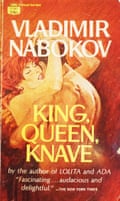
I was an avid and undiscriminating reader in my teens: I’d move on to Jane Austen after Ed McBain or Nevil Shute. I remember being bowled over by Catch-22 and Updike’s Couples and I couldn’t get enough of Sergeanne Golon’s Angelique books. I gave a paper on Scott Fitzgerald for the school literary society and was asked to vet Nabokov’s Ada to see if it was fit for the library’s open shelves. To be honest, Ada was beyond me, then, but the book I’d give to my teenage self would be another Nabokov – King, Queen, Knave.
King, Queen, Knave was originally published in Russian in 1928, only appearing in English 40 years later in 1968, translated by Dmitri Nabokov – with help from his dad. It’s a classic love triangle: boorish young Franz is seduced by bored Martha, the wife of his smug boss and cousin, Dreyer. The lovers conspire to kill the cuckold but it all goes terribly wrong and Martha dies. The plot is irrelevant. What is brilliant about King, Queen, Knave and why I know it would have been revelatory to my younger self is that it demonstrates how you can be, at the same time, both very funny and very literary. Nabokov’s dark, dark comedy (also a wonderful portrait of Berlin before the Nazis arrived) is exceptionally well written with immaculate precision of language. I don’t think Nabokov ever wrote a funnier novel – perhaps Pale Fire runs it close – but the way its world and its denizens are rendered through language is as magisterial and assured as Lolita and Pnin.
Tessa Hadley
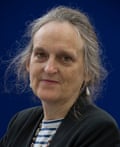
What I wanted to send back to my younger self, when I first thought about it, was something with a message of restraint. Be cautious, don’t be in too much of a hurry, everything takes time, wait … Elizabeth Bowen’s novel The Death of the Heart, maybe, whose teenage protagonist, Portia, is poignant, comical and dangerous, blundering into life, insisting on the truth, upsetting all the fragile compromises the grown-ups have made in order to get by, confronting them with themselves. Hold back, Portia. Wait and see.
But that’s ridiculous. As if any teenager would listen to that warning. I read The Death of the Heart in those days anyway, and loved it, and all I took away from it was a passionate identification with Portia, who wanted to live now, not later: risking everything, throwing herself at whatever adventure was passing.
So I might as well send back some book with an appetite for life to match those teenage years. I’ll send myself the poems of Walt Whitman, with their hurrying energy and ambitious vision. I think I’d have found “Reconciliation” consoling then as I do now. “Word over all, beautiful as the sky, / Beautiful that war and all its deeds of carnage must in time be utterly lost, / That the hands of the sisters Death and Night incessantly softly wash again, and ever again, this soil’d world.”
Aminatta Forna
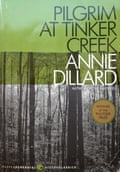
A few years ago, after I had moved to America, a friend recommended to me the writer Annie Dillard. I began with her first book, Pilgrim at Tinker Creek, published in 1974 when she was 28 and which won her a Pulitzer prize the following year. I was 10 that year – preoccupied with my immediate world, the gecko on my bedroom wall, the small stream at the bottom of the hill, the ant lion as it lay hidden in the sand awaiting the unsuspecting ant. I also thought of God and the universe, and whether the one existed and where the end of the other might be found.
Dillard’s book is said to have been inspired by a blind child the author had read about, who saw for the first time after cataracts had been removed. Dillard describes her own walks around a creek near her home in the Blue Ridge mountains of Virginia. Tinker Creek is small, close to a highway, from which floats the sound of traffic and the occasional plastic bag. Yet in Tinker Creek Dillard finds unrestrained beauty and contemplates the infinite through the minutiae of the natural world – a moth emerging from its cocoon, the unblinking gaze of a weasel with whom she locks eyes. In Tinker Creek she also finds cruelty: the sight of a frog being eaten alive from inside by a giant water bug, “his mouth a gash of terror”. Why God allows cruelty is a question she meditates on throughout.
In London, my Tinker Creek was my back garden, where, from my study window, I watched each year’s litter of fox cubs come of age. I watched them while I wrote books, mainly about war. Here in Virginia, not so far from where Dillard lives, my Tinker Creek is a small area of woodland next to my house.
There are books that change the way you think, and books that change the way you see the world. But Pilgrim at Tinker Creek is different for being one that reminds the reader of the way she once saw the world, in its purest, though by no means simplest, form. In my middle age her book returned that gift to me. Perhaps if I had been given Pilgrim at Tinker Creek when I was 20, I should never have lost sight of it.
John Banville
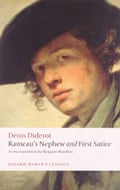
When I published my first book, around the close of the Bronze Age, a kindly reviewer – PJ Kavanagh, I think it was – conceded that I had some talent, but added that it was obvious I had been reading the wrong people. He was correct, of course, since I had spent my adolescence wallowing in the post-Romantic excesses of the likes of Dylan Thomas and Lawrence Durrell. It was only when I came across an enthusiastic mention of it in an essay by Lionel Trilling that I was led to one of the most bracingly subversive texts in European literature, Rameau’s Nephew, written in the 1760s by Denis Diderot.
This short work, along with Kleist’s sublime essay “On the Marionette Theatre” and Hugo von Hofmannsthal’s Lord Chandos Letter, changed entirely my notions of how and what to write. Rameau’s nephew – he is not even granted a proper name – is ironical, vituperative, seething with hysterical self-loathing, and horribly wise to the sordid realities of a world that dismisses true artists in favour of panders, imposters, and mountebanks of all kinds.
Diderot, a leader among the encyclopédistes, was a splendid human being, brilliant, funny and unfailingly wise. If I could reach back and press a copy of Rameau’s Nephew into the hands of my 12-year-old self, what a lot of silliness I would have been saved. But would I have read it, and if I had, would I have understood it? Shaw was right: youth is wasted on the young.
Maggie O’Farrell
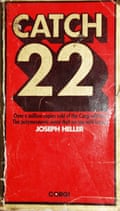
I wish someone had pressed Catch-22 into my perhaps 16-year-old hands. I could have done with immersing myself in Joseph’s Heller’s bracing, astringent prose. The book is a wild, startling ride through the multiple minds of airmen stuck on a base in Italy in the second world war, but don’t be deceived by the anarchy. Heller knows exactly what he is doing: this is wildness of a highly conscious, deeply cerebral kind. The novel unfolds in a non-chronological, apparently chaotic stream, with a plethora of desperate, war-crazed characters; in Heller’s hands, however, it all builds to a perfectly controlled, precisely timed apotheosis. Don’t all teenagers need a lesson in the art of chanelling chaos? There is no better example than this book.
Philip Hensher
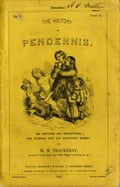
I’m generally a great believer in books turning up when they’re supposed to. I was late to Tolstoy, but in my 30s I was very receptive to him. Similarly with Philip Roth, Elizabeth Taylor or Kingsley Amis, who I wasn’t much bothered about when young, but who were just perfect for my early middle age. The two books I regret not reading earlier were both things that I’d heard from critics weren’t worth troubling with – Thackeray’s The History of Pendennis and Conrad’s Chance. Actually, Pendennis is a perfect joy, rueful, funny and forgiving about the disasters of youth. I would have loved to have read it when I was 20. It would have put me right very quickly. And I always loved Conrad, and have no idea why I let Conrad scholars persuade me that this thrilling masterpiece was an inferior work. I didn’t read it until I was nearly 40, and immediately saw that it knew everything about men and women, money and lying, and (an illusion, but a strong one) how to tell a story. It would have saved me a lot of trouble. As it is, I will never listen to a critical consensus about a great writer’s inferior books again.
Nicola Barker

When I was a girl and my parents asked me what I wanted to be when I grew up my answer was invariably “a go-go dancer …” (it was the 1970s) “… and a nun”. I didn’t see anything remotely at odds in having these dual aspirations. As an adult, very little has changed. I am, by nature, expressive and repressive in equal measure – uninhibited but deeply disciplined. I think this weird disparity is what fuels who I am as a writer.
I have always been fascinated by outsiders, and for me, saints are apotheoses of outsiderdom. Not ancient saints – Augustine, Francis – but modern ones such as Padre Pio, and the child visionaries of Fátima, Kibeho and Medjugorje. Having been deeply religious as a child (The Cross and the Switchblade was revelatory for me), in my 20s I lost my faith. These were strange years. My discipline and indiscipline became tangled and embedded. I turned dark. And I suffered. But my suffering felt hollow and meaningless.
Saints are broadly considered to be “good people”, but this definition barely scratches the surface of what they are and do. Sainthood is suffering. It is self-negation: pain with purpose. The saint I love best is Faustina, “God’s Secretary”; uneducated, Polish, she died in obscurity in 1938. Her extensive diaries Divine Mercy in My Soul redefined my perception of both suffering and ecstasy. The diaries are truly bizarre and gorgeously restrained. Sane yet demented. They speak so directly to my paradoxical self. I dearly wish I had found them earlier.
Charlotte Mendelson
My younger self was so unfortunate, a bookish muddle of self-hating jumpers, OCD and despair: only time could help me. If a teenage girl voluntarily reads One Day in the Life of Ivan Denisovich, I Capture the Castle can only do so much. But a big old pile of the best in current YA, plus Naomi Alderman’s The Power, and Goodnight Stories for Rebel Girls might offer a little hope, and Villette. Always, Villette.
Julie Myerson

I suspect you find books when you need to find them, but I do know that I read Simone de Beauvoir’s The Prime of Life at the exact right point in mine. I was 19 years old, abroad, penniless, adrift, desperate to be a writer but with no real sense of how I should go about it. I sat in a park in the middle of Milan and read this book (Penguin edition with the enigmatic blue Matisse cut-out on the front) until the light had gone and I could barely see the page. De Beauvoir’s intelligent, enigmatic and fantastically calm presence staved off loneliness, hunger, worry about the future – in fact the sense of confidence and liberation it gave me was giddying, sublime. Would I still urge a young person to read it? Well, searching everywhere for my treasured old copy just now, I finally found it in my daughter’s bedroom. Which felt pleasing.
Blake Morrison
I wish I’d given my 10-year-old self William Golding’s Lord of the Flies. It would have prepared me for the following year, when I moved from a tiny village primary school (18 pupils) to a single-sex grammar school with 500 boys. I’d have learned about bullying, violence and the brutal competition to be top dog. I’d have seen how pranks and dares can get dangerously out of hand. And I’d have understood that some poor mug will always be picked on because of his accent or shyness or because (like Piggy in the novel) he’s fat and wears specs.
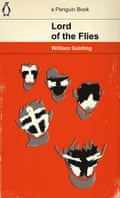
Golding knew what he was talking about: at the time he wrote the novel (a riposte to The Coral Island and The Swiss Family Robinson), he was teaching at an all-boys school not unlike the one I attended. If I’d known what he was talking about, I might have made more of school instead of spending all my time there trying not to be noticed. It wasn’t such a bad place; I did OK. Still, when I read the novel in my late teens, and reached the part where Ralph weeps for “the end of innocence” and “the darkness of man’s heart”, I felt like weeping, too: if only I’d been warned!
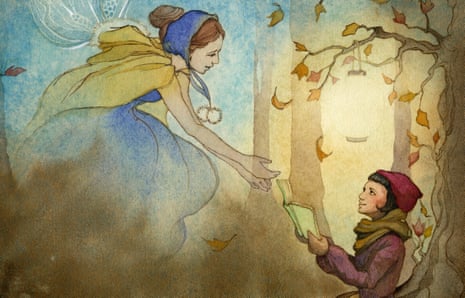
Comments (…)
Sign in or create your Guardian account to join the discussion